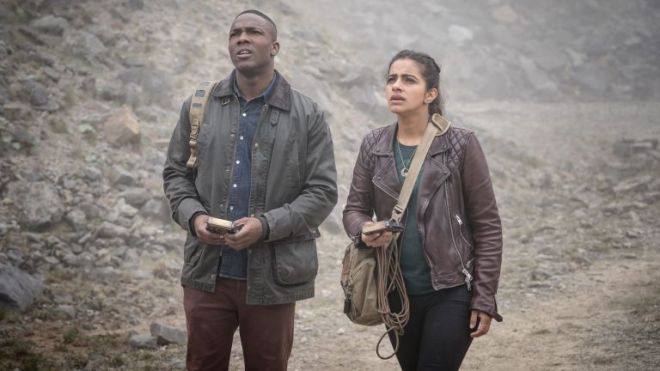I think it’s great that Dr Who acknowledged dyspraxia actually exists. Ryan, played by Tosin Cole, a character in the new series, struggles to learn to ride a bike because of his dyspraxia. Just a note to Ryan, it probably can be done but he’ll have to work bloody hard to get there.
As a person who has dyspraxia, it’s nice to see it recognised, but I’m worried the show may be mischaracterising and giving an impression to the average viewer which is a far cry from how dyspraxia really impacts people. Raising the profile of dyspraxia might help me avoid awkwardly trying to get in a comment about begin dyspraxic as I trip over myself, but it needs to be done accurately and give a full and real picture.
“He’s got dyspraxia, it’s a co-ordination disorder.” Is the line in the show which explains a bit about dyspraxia. It simplifies the reality of what it is and how it manifests itself in your day to day life.
I can’t swim, ride a bike or do a whole host of physical activies as well as I would like. Dyspraxia for me has been a challenge in a variety of ways. As I can’t ride a bike, I’m not all that bothered as I don’t know what I’m missing, but when I put my mind to a day to day task and dyspraxia gets in the way, it’s far more frustrating.
Dyspraxic people have a number of fine co-ordination issues and larger scale issues. For example, I struggle with my handwriting, which is a matter of detail, but also swimming which requires full body movement.
Dyspraxia is so much more than the co-ordination issues. For example, organisational issues, alongside associated issues including dyscalculia (something I do not have) and over-sensitive senses, something which has massively impacted my relationships. It’s not easy telling a girl you feel passionately about that you don’t want to hold her hand, because it’s physically overbearing.
The difficulties in organisation, in my short and long term memory has been one of the biggest impacts for me. When I’m working to my own deadlines, I often struggle to break down the various tasks required for work and see it as a daunting homogeneous blob. As it looms ever closer, the organisation required to bring it together never quite comes around, and I lose track.
Knowing I struggle with co-ordination, I become anxious when I’m aware I have to interact with an issue of co-ordination. My hand shakes when I have to pay with cash or shake a hand. It’s not completely debilitating but adds unnecessary pressure in social and working life, which awareness could mitigate to a great extent. I’m constantly dodging opportunities to embarrass myself, imagining a high 5 turning into a solid palm to the face. In the end, I call it all too American and move on.
For a dyspraxic person, it is always easier to explain the difficulties I have, if the person I’m speaking to is familiar with the issues beforehand. If Dr Who goes on to give a fuller picture, I will be grateful to the writers and Tosin Cole. I hope that they go on to give something beyond the surface level, and show their viewers, dyspraxia is more than a bit of wobbliness on two wheels. If the profile of dyspraxia is raised, but people believe they know what it is, based on what could become a stereotypical view, more harm than good could be done.
I’ve only touched on the issues briefly, and those that impact me most, but if you are interested please read up with the dyspraxic foundation and other sources.

 An image of four children keeping each other stable, also viewed through other eyes as four children tied together up and threatened by rope. The ambiguity of how we interpret art is surely inherent in what makes it art.
An image of four children keeping each other stable, also viewed through other eyes as four children tied together up and threatened by rope. The ambiguity of how we interpret art is surely inherent in what makes it art.